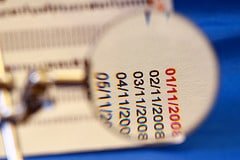 Summary: Many businesses assume that they’re too small to care about “big data.” They don’t think they generate enough data for it to apply. The reality is, big data can help companies of all sizes. In fact, small companies may even be better suited to capitalize on big data than the large ones. Learn why, and how your company can take advantage of big data–regardless of size.
Summary: Many businesses assume that they’re too small to care about “big data.” They don’t think they generate enough data for it to apply. The reality is, big data can help companies of all sizes. In fact, small companies may even be better suited to capitalize on big data than the large ones. Learn why, and how your company can take advantage of big data–regardless of size.

There’s a “big data” myth floating around that I’d like to debunk: Many believe that big data is only for huge companies. It’s only for the companies who generate massive volumes of data.
It’s just not true.
Sure, those types of companies certainly have “big data.” But, what about small or medium-sized companies? Should they just ignore it altogether?
Quite the opposite. In fact, smaller companies might be in a better position to capitalize on big data than their larger counterparts. Consider a quote from this article: “In many ways, big data is suited to small business in ways that it never was for big business–even the most potent insights are valueless if your business is not agile enough to act on them in a timely fashion.”
Think about that for a minute. While large companies may generate big data, they move slowly. With their agility, small-to-midsize companies are perfectly suited to move quickly and capitalize on big data.
But, what if they don’t generate massive amounts of data? How can the average business use big data? Today, let’s answer that question. Here are a few ways businesses of all sizes can capitalize on big data.
1. Use publicly available data to your advantage

Data is everywhere, and much of it is freely available to your company. The problem is, many businesses don’t realize that it exists. Or, they don’t recognize the opportunity it provides.
What kind of data can you find for free? All types. This list of freely available big data sources provides a great starting point. It includes climate data, census information, social media statistics, crime data, and so much more.
How does this help you? Look for ways you can combine this data with your existing data for new insights. Or, find ways to turn this data into meaningful information for your customers or executives. Here’s a great example of one business that’s capitalizing on this freely available public data.
“We use free FBI crime data to compile and rank the safest cities in each state,” says Paige Sjoblom, Community Manager at Safewise. “This data is a free, which makes it easily accessible for small businesses. This post, The 50 Safest Cities in Texas has received 35,000 views this year, and social proof of 6,000 FB interactions. We publish these reports bi-weekly and start over once the FBI releases new crime data.”
Here’s another example: The Point Defiance Zoo & Aquarium recently used weather data to predict attendance and staffing requirements. In bad weather, zoo attendance goes down–which lowers their staffing requirements. But, with the rapid weather fluctuations in the Pacific Northwest, predicting weather is a difficult task. Using historical weather data combined with attendance records, the zoo is now able to predict attendance within a couple hundred visitors–thanks to the use of big data.
2. Look to associations and organizations for data
Where can you find the most complete data on the prospects in your industry? While not free, you’ll find that trade associations in most industries with all sorts of data on your market. Look for ways you can combine this data with your existing data for actionable insights.
“Any industry that has even a minor marketplace has some type of industry association serving the businesses in that group,” says David Burrows, Co-founder of Laundri. “Most of these organizations offer members useful and shared information about trends, markets, customer base, pricing and government regulatory issues that can be a cornerstone to a businesses success. The average cost of industry associations vary but when all the benefits are weighed, it can be a great investment.”
3. Turn your log files into actionable data

Chances are, you generate more data than you realize. One common, yet untapped source of data is found in the business software you use every day.
Your business software generates massive amounts of data in the form of log files. Log files are automatically created and updated whenever a machine or machine user does something. These application and server log files hold a goldmine of information about your company and user activity.
“You don’t realize the value of your log files until you explore the data,” explains Tyler Wassell, Development Manager at mrc. “When we put our server log files in Hadoop and created analytical applications over that data, we gained a lot of valuable information. It tells us which applications are most popular, which ones are unused, which users are most active, and more. This data helps me understand where my development efforts are best spent.”
4. Capture more data and look for patterns
“Look for patterns among your most loyal customers,” says Ruben Ugarte, an Analytics Consultant. “What do these customers do when they visit your site or store? What attributes do these customers have that make them more loyal than the rest? You could start to capture demographic info on all your customers/visitors and start seeing patterns among the best customers.”
How much data do you capture about your customers? For some businesses, they only capture the bare minimum. Others capture many data points, and use this data to predict buying patterns.
For instance, in a widely publicized story a few years back, Target predicted a pregnancy before the expectant mother’s family even knew about it. Using data taken from recent purchases, they were able to predict pregnancies and send targeted coupons to expectant mothers when they needed them.
Now, I’m not saying you need to reach this level of analytics. After all, Target faced a consumer backlash when this story broke–as customers found this level of personalization rather invasive. But, I share the story to highlight just how powerful this data can be. If you could predict when your customers were ready to buy, would that be useful to your business? Of course! As you start collecting more data points on your prospects and customers, you can then analyze that data and uncover patterns.
5. Make use of sensors

It’s estimated that sensors will be the primary source of big data for years to come. These sensors connect physical objects to the web, delivering a wealth of information.
For instance, hardware sensors can alert you to hardware failures, and deliver critical data about the health of a machine.
Energy monitoring sensors can track energy consumption, and highlight ways to save money.
Location-tracking sensors will help you track and analyze delivery vehicles, and optimize routes.
Bluetooth beacons can track smartphone movement, along with distance away from the beacon. When you think about it, this has all sorts of applications from retail stores, to inventory management, and so much more. To learn more about beacons, here’s a great article to check out.
Smartphones in general come packed with sensors, which have practical use for businesses in a variety of ways.
If there’s one area that gives small businesses the greatest ability to capitalize on big data, in might just be sensors. They’re cheap, accessible, and provide plenty of useful data. The question is: Are you going to take advantage of it?
Summary
Now, these are just a few ways any business can capitalize on big data, but the list could go on. If you would like to add anything to this list, I’d love to hear it. Feel free to share in the comments.
Pingback: 5 common big data myths – mrc’s Cup of Joe Blog | Big Data Cloud